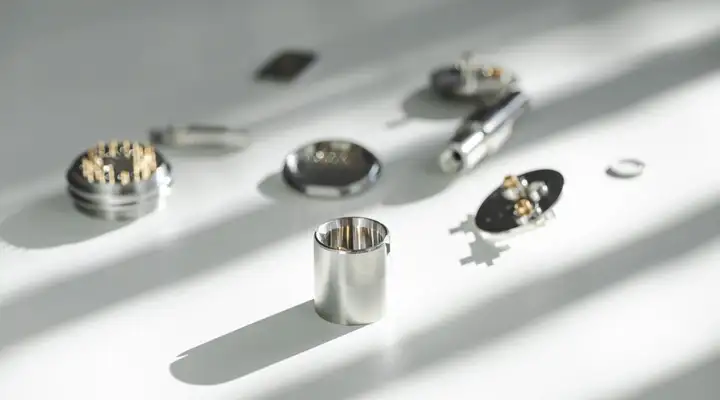
In a startling revelation, a recent study has discovered the presence of arsenic, lead, and other toxic metals detected in tampons, study finds. This unsettling discovery has significant implications for women’s health, prompting a re-evaluation of the materials and manufacturing processes used in the production of feminine hygiene products.
The Study’s Findings
The study, conducted by a team of researchers from various institutions, aimed to assess the safety of tampons and other menstrual products. They analyzed multiple brands and types of tampons, including those marketed as organic or natural. The results were alarming: arsenic, lead, and other toxic metals detected in tampons, study finds, were present in quantities that could pose health risks over long-term use.
These toxic metals, even in trace amounts, can accumulate in the body over time. The study highlighted that chronic exposure to these substances could lead to serious health issues, including reproductive problems, hormonal imbalances, and even cancer.
Health Implications of Toxic Metals
Arsenic, lead, and other toxic metals detected in tampons, study finds, can have severe health repercussions. Arsenic, for example, is a well-known carcinogen. Long-term exposure can lead to skin lesions, cardiovascular disease, and an increased risk of cancer. Lead, on the other hand, is notorious for its neurotoxic effects, particularly harmful to pregnant women and developing fetuses. It can cause developmental delays, cognitive impairments, and various other health issues.
Other toxic metals detected, such as mercury and cadmium, also pose significant health risks. Mercury can damage the nervous system, kidneys, and immune system, while cadmium is linked to bone damage, kidney disease, and lung cancer.
Why Are These Metals Present in Tampons?
The presence of these harmful metals in tampons raises critical questions about the manufacturing processes and materials used. Tampons are typically made from cotton, rayon, or a blend of both. The cultivation of cotton, especially non-organic cotton, involves the use of pesticides and fertilizers, which can introduce heavy metals into the plant. Additionally, the bleaching and processing of rayon can result in the contamination of the final product.
Moreover, the packaging materials and applicators, often made of plastic or cardboard, can also contribute to the presence of these metals. During the manufacturing process, machinery and production lines can introduce metallic particles into the products.
Industry Response and Regulatory Oversight
The revelation that arsenic, lead, and other toxic metals detected in tampons, study finds, has led to a significant outcry from consumers and health advocates. Many are calling for stricter regulations and more rigorous testing of menstrual products to ensure their safety. Currently, the regulation of tampons varies widely by country, with some regions having more stringent requirements than others.
In response to the study, several tampon manufacturers have pledged to review their production processes and enhance quality control measures. Some companies are advocating for increased transparency and better labeling practices to inform consumers about the materials and potential risks associated with their products.
Choosing Safer Alternatives
For those concerned about the potential risks of toxic metals in tampons, there are safer alternatives available. Menstrual cups, for example, are made from medical-grade silicone, rubber, or elastomer, materials that are less likely to contain harmful metals. Reusable cloth pads, made from organic cotton or bamboo, are another option. These products not only reduce exposure to harmful substances but also have a lower environmental impact compared to disposable tampons.
Additionally, some brands offer organic tampons made from 100% certified organic cotton, grown without the use of synthetic pesticides or fertilizers. While these may not completely eliminate the risk of metal contamination, they are generally considered safer than conventional tampons.
The Need for Further Research
The findings of this study underscore the need for further research into the safety of menstrual products. More comprehensive studies are necessary to determine the full extent of metal contamination and its health impacts. Additionally, research into alternative materials and safer production methods is essential to ensure the health and well-being of menstruating individuals.
Consumer Advocacy and Awareness
Consumer advocacy plays a crucial role in driving change within the industry. By demanding higher standards and greater transparency, consumers can push manufacturers to prioritize safety and quality. Awareness campaigns and educational initiatives can help inform the public about the potential risks associated with menstrual products and encourage safer choices.
Conclusion
The revelation that arsenic, lead, and other toxic metals detected in tampons, study finds, is a wake-up call for both the industry and consumers. It highlights the urgent need for stricter regulations, better manufacturing practices, and more informed consumer choices. As we move forward, the focus must be on ensuring that all menstrual products are safe, reliable, and free from harmful contaminants. By prioritizing health and safety, we can create a better future for all who rely on these essential products.





More Stories
Investments in Real Estate in Spain: Marbella Luxury Homes
Hermetic Feedthroughs for Medical Devices: Safety and Reliability
The Importance of Expert SaaS Marketing Agency Support